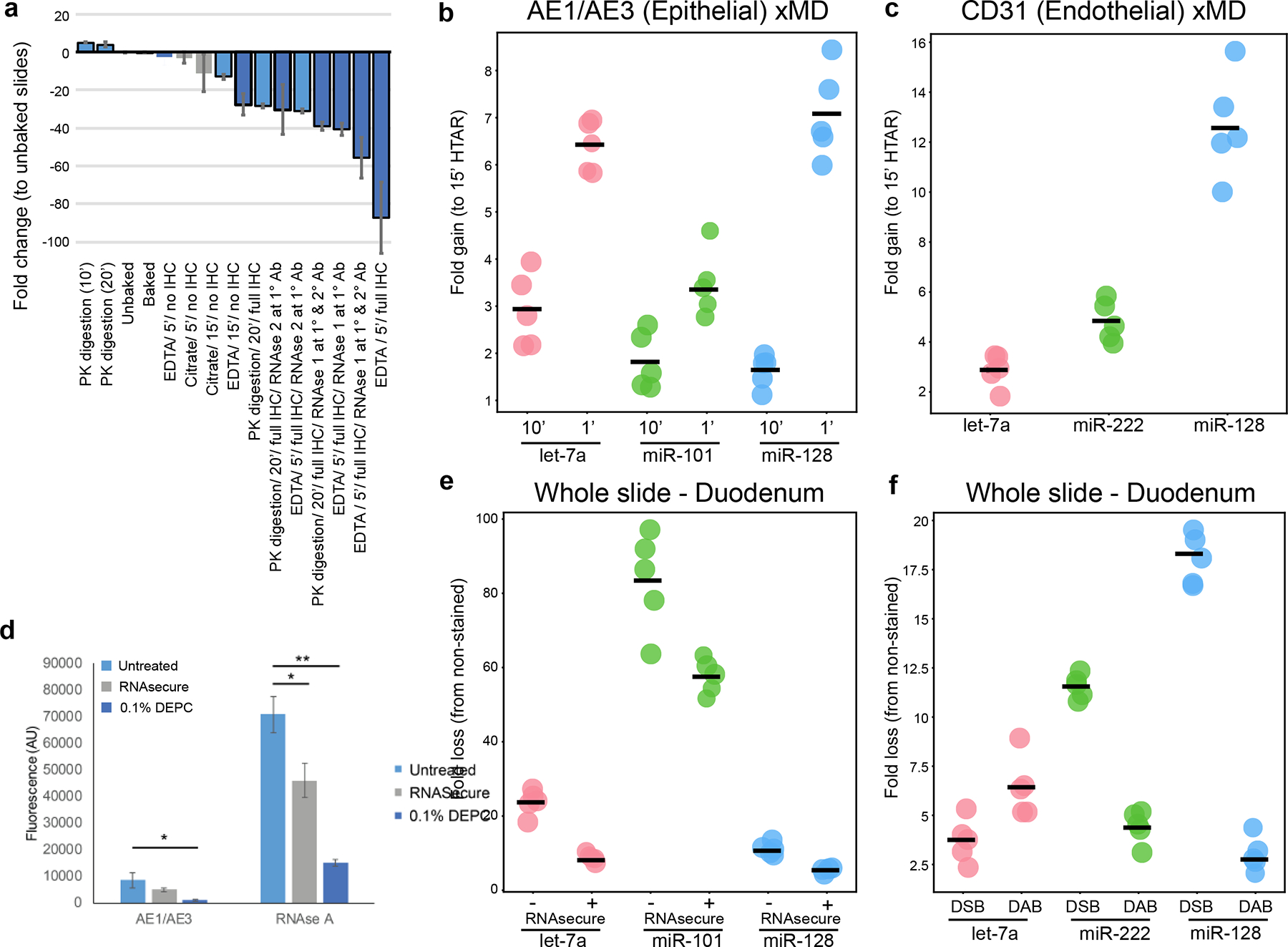Figure 2.

The RNA fold loss of multiple steps was compared. (A) Comparison of RNA fold loss between the steps of IHC. The fold change is a loss of let-7a expression relative to an unexperimented on tissue scrape from a matched slide. Antigen retrieval methods (Millipore Sigma) and RNAse inhibitors (NEB) were evaluated. RNA was collected after antigen retrieval steps, using a primary antibody, and at the end of the full IHC experiment. More than 80-fold RNA loss was observed with the standard protocol. (B) Increase of miRNA expression in xMD-obtained AE1/AE3* cells with shorter HTAR lengths (1 and 10 min vs 15 min). (C) Increased miRNA expression in xMD-obtained CD31+ cells with a shorter HTAR length (10 min vs 15 min). (D) RNAse A and 0.1% DEPC reduced RNAse activity (measured in arbitrary fluorescence units) in AEl/AE3-stained slide material or in material with an RNAse A spike-in. *P < .01. **P < .001. (E) Whole slides, either untreated (−) or treated (+) with RNAsecure during IHC. were compared with slides not treated. miRNA loss was greater for 3 representative miRNAs, Let-7a, miR-101, and miR-128, when RNAsecure was not used. (F) Slides treated with Deep Space Black (DSB) or DAB were compared with slides not treated with a chromogen. Overall. DSB had a more significant loss of miRNA. DAB. 3.3’-diaminobenzidine; HTAR, high-temperature antigen retrieval; IHC. immunohistochemistry; xMD. expression microdissection.
